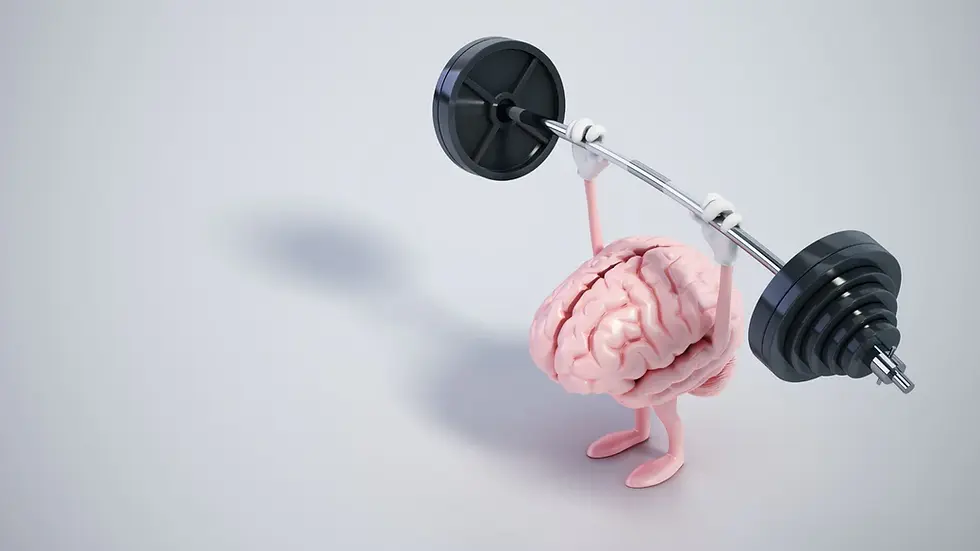Sustainability of Neurofeedback training effect
- Rachel Langford

- Jul 12, 2021
- 3 min read
Neurofeedback (NF): improving self-regulation of brain activity using a brain–computer interface.
A promising aspect of neurofeedback is that it may rely on procedural learning, thereby potentially allowing lasting effects and thus longer clinical benefit after completion of neurofeedback treatment.
Compared to non-active control treatments, NF appears to have more durable treatment effects. Studies investigating the effects of neurofeedback and control conditions directly after treatment and during a follow-up period (in which no additional neurofeedback sessions or booster sessions were performed), vary in the duration of follow-up periods.
Here we will list some of the findings in the field.

How long does the positive effect of neurofeedback training can last for?
Improvements of symptoms as well as the brain activity trained patterns have been shown to be maintained for few months up to few years (3-6 months and up to 10 years follow-up)
• In their review, Arns and Kenemans found that the clinical effects of neurofeedback were maintained across 6 and 24-month follow-up periods, with a trend for larger symptom decreases for hyperactivity/impulsivity after 24 months than after 6 months.
• This was also demonstrated by Steiner N.J in 2014. (6 months follow-up)
• A study by VAN DOREN 2019, showed a significant improvement in symptoms at FU for both inattention and hyperactivity–impulsivity in the neurofeedback conditions, which indicates that NF results in lasting effects for approximately 6 months and potentially up to 1 year, whereas effects of non-active control groups are no longer significant at FU.
• Cihan Gani showed in 2018 sustainability of training improvements at 6 months and 2 years follow up.
• J Lubar, who was one of the first in the field, did a 10-year follow-up which he reviews in his publication from 1995. Lubar's 10 years follow up showed the effects remained in 80% of ADHD children.
What if it is all a placebo effect?
The suggestion that neurofeedback training is showing improvements due to the expectation of the client that it will, have been studied from many angles. The main point that can support the fact that it in NOT a placebo effect, in the context of these article, is:
When the placebo effect shows to indeed create improvements with other type of treatments, and for various disorders, it does not show to be effective anymore in the long term. In other words: if it was due to placebo effect, the improvements are not showing anymore at a later follow-up check. This is the case also in the NF studies – the NF group maintained the improvements while the positive effects in the control group were no more significant at the follow-up. The control group also had their expectation that the procedure offered to them (that may look and feel exactly like NF session, but without the real feedback from their brain activity) will improve their symptoms (i.e. inducing placebo effect), alas, when it wasn’t NF, significant improvements were not shown later in the follow-up.
These findings support the idea that NF does indeed have a different, specific effect due to its actual training and not simply due to the non-specific or placebo effects related to the setting, the therapist–patient relationship or expectations.
Placebo control, often used interchangeably with sham (e.g., Heywood and Beale, 2003; van Dongen-Boomsma et al., 2013) or mock (e.g., Egner et al., 2002) feedback, lacks only the active core component, namely the consistent feedback contingent upon specific EEG patterns, and appears indistinguishable from the neurofeedback condition. This typically implies that non-contingent sham feedback is provided to the participant during the training, either by frequently changing contingencies with real data (e.g., Heywood and Beale, 2003), by using simulated EEG-like data or feedback (e.g., Logemann et al., 2010; van Dongen-Boomsma et al., 2013), or pre-recorded data, which all may be combined with contingent feedback of real artifacts (Kerson and Collaborative Neurofeedback Group, 2013).
References
Arns M, Kenemans JL. Neurofeedback in ADHD and insomnia: vigilance stabilization through sleep spindles and circadian networks. Neurosci Biobehav Rev. 2014;44:183–194.
Van Doren, J., Arns, M., Heinrich, H., Vollebregt, M. A., Strehl, U., & K Loo, S. (2019). Sustained effects of neurofeedback in ADHD: a systematic review and meta-analysis. European child & adolescent psychiatry, 28(3), 293–305. https://doi.org/10.1007/s00787-018-1121-4
Gani, Cihan & Birbaumer, Niels & Strehl, Ute. (2008). Long term effects after feedback of slow cortical potentials and of theta-beta-amplitudes in children with attentiondeficit/hyperactivity disorder (ADHD). International Journal of Bioelectromagnetism www.ijbem.org. 10. 209-232.
Lubar, J. F. (1995). Neurofeedback for the management of attention-deficit hyperactivity disorders. In M. S. Schwartz (Ed.), Biofeedback: A practitioner’s guide (pp. 493–522). New York, NY: Guilford.









Comments